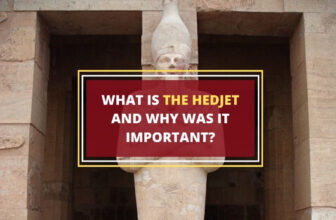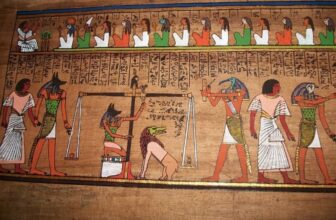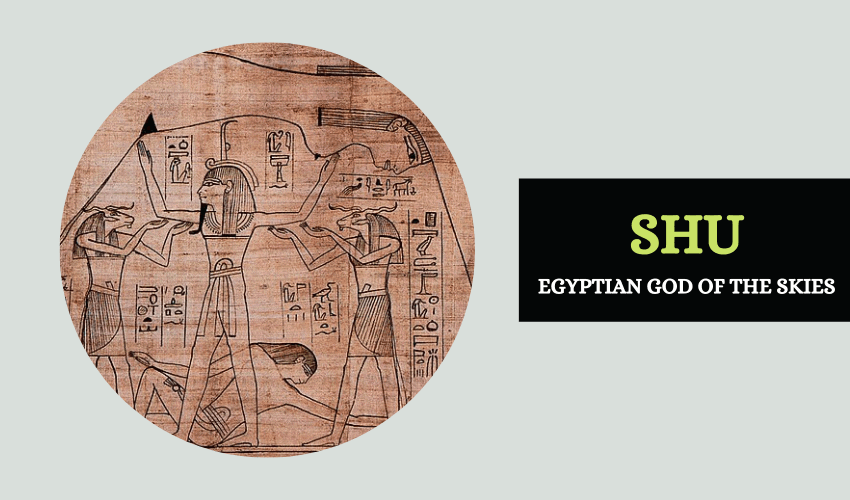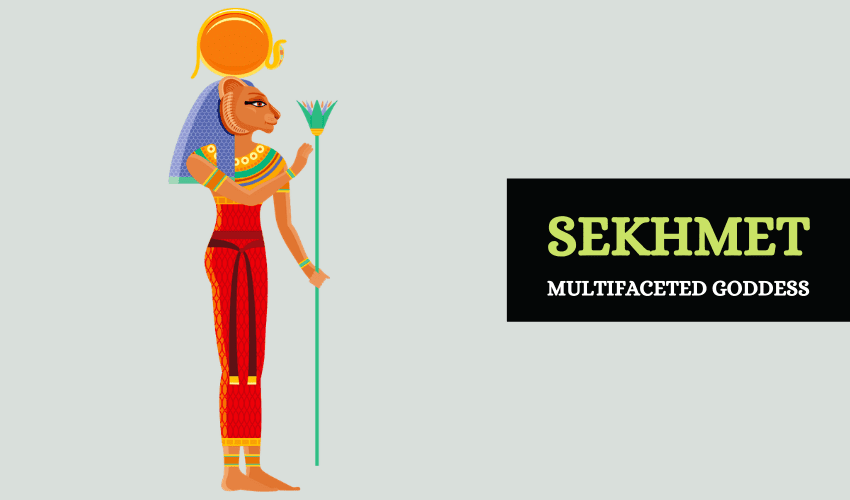
Table of Contents
In Ancient Egypt, Sekhmet was a multifaceted and remarkable deity, depicted mostly as a lioness. She was one of the first deities of Egyptian mythology and was famous for her ferocity. Sekhmet is a warrior goddess and a goddess of healing. Here’s a closer look at her myth.
Who Was Sekhmet?
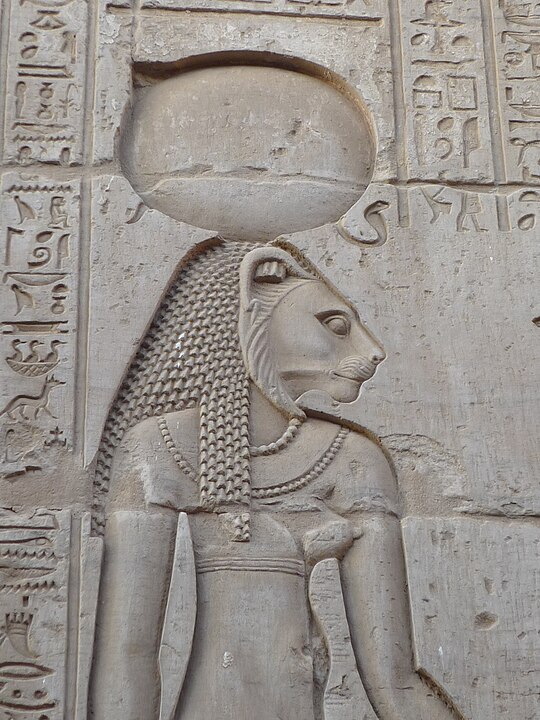
Sekhmet was the daughter of the sun god Ra, and she fulfilled the role of his avenger. She could take the form of the Eye of Ra, which was a part of the god’s body but also a deity in its own right.
Sekhmet would engage the enemies of Ra and act as the representation of his strength and rage on earth. In some myths, she was born from the fire of Ra’s eye. In other accounts, she was the offspring of Ra and Hathor. Sekhmet was the consort of Ptah and her offspring was Nefertem.
Sekhmet was a warrior goddess, but she was also associated with healing. In some of her depictions, Sekhmet appears with a solar disk over her head. Her portrayals usually showed her as a lioness or as a lioness-headed deity. When she was in a calmer state, she took the form of a household cat, similar to the goddess Bastet. Sekhmet is characteristically depicted dressed in red, associating her with blood and fiery emotions.
Sekhmet’s Role in Egyptian Mythology
Sekhmet was a protectress of the pharaohs, and she helped them in warfare. After their deaths, she kept protecting the late pharaohs and guided them to the afterlife. Egyptians also associated her with the hot sun of the desert, plagues, and chaos.
One of her most important roles was as an instrument of vengeance. She would follow the orders of Ra and unleash her wrath onto those who the god of the sun wanted to hurt. Some authors believe that Ra created her to punish and eradicate humans from the earth for not living a balanced and just life, following the principle of ma’at.
Sekhmet was a feared goddess, but she was also praised for her role in healing and keeping plagues away. Due to the similarities between Hathor, Sekhmet, and Bastet, their myths have been interwined throughout history.
However, Bastet, the cat-headed or cat goddess, is the deity most closely associated with Sekhmet. While Sekhmet is harsh and vengeful, Bastet, on the other hand, is gentler and more temperate. In fact, the two were so similar that they were later viewed as two aspects of the same goddess.
Below is a list of the editor’s top picks featuring the statue of Sekhmet.
Sekhmet Punishing Humans
In some accounts, Ra sent Sekhmet to make humans pay for their vile and debased ways. In other tales, it was the goddess Hathor in the form of Sekhmet who brought destruction on humans as per Ra’s instructions.
According to the myth, Sekhmet’s attack almost killed all humankind, but Ra intervened to save humanity. He decided to stop the killing spree of the lioness goddess but could not make her listen to him. In the end, he dyed some beer to make it look like blood. Sekhmet kept on drinking the beer until she got drunk and forgot her vengeful task. Thanks to this, humanity was saved.
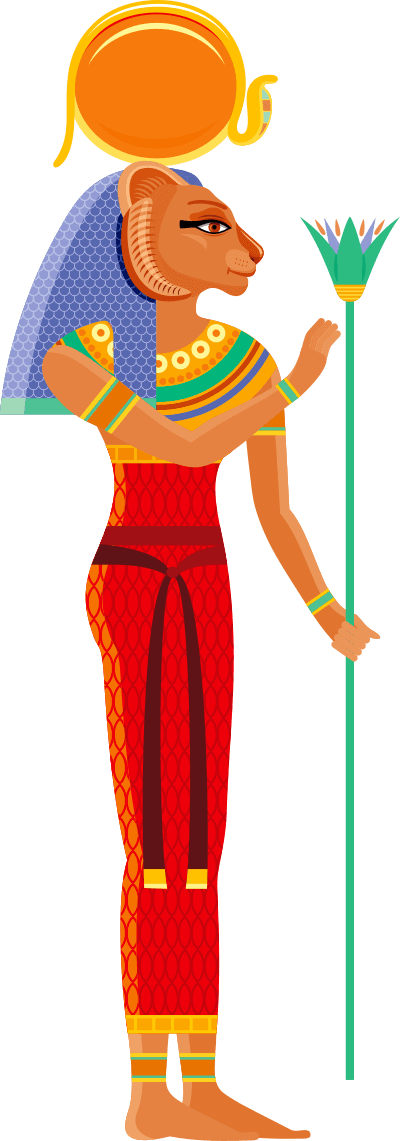
Worship of Sekhmet
The Egyptians believed that Sekhmet had the solutions for all the problems on earth. For that, they prayed to her and offered her food, beverages, played music for her, and also used incense. They also offered her mummified cats and whispered their prayers to them.
Sekhmet had different festivals during the year, meant to keep her rage under control. In these festivals, the Egyptians drank high quantities of alcohol to imitate the drinking of the goddess when Ra appeased her wrath. Her main cult center was located in Memphis, but a number of temples were built in her honor, the oldest known in Abusir, dating from the 5th dynasty..
Sekhmet’s Symbolism
In recent times, Sekhmet became an important symbol of feminism and women empowerment. Her name stands for “she who has power”, and in this sense, she had renewed significance outside Egyptian mythology. Alongside other goddesses, Sekhmet represents the strength of women in ancient cultures and mythologies, where men traditionally had leading roles.
Although Sekhmet had to do with medicine and curative properties, she was also a vengeful strong lioness. Even the mighty Ra could not stop her from attacking her enemies. Sekhmet was a warrior and a symbol of power in times where women had roles of mothers and wives. Her wildness and her associations with war turned her into a ferocious character that still impacts society.
Symbols of Sekhmet
Sekhmet’s symbols include the following:
- Sun disk – This relates to her association with Ra and hints at her role as an important deity with great power
- Red linen – Sekhmet is typically portrayed in red linen, which symbolizes blood, but also her native Lower Egypt. This connection is apt, as Sekhmet is a warrior goddess, and is famous for her myth where she slakes her thirst by drinking reddened beer mistaken for blood.
- Lioness – Her ferocity and vengeful nature have associated Sekhmet with the lioness. She is a lioness by nature and is typically depicted as either a lioness or a lioness-headed goddess.
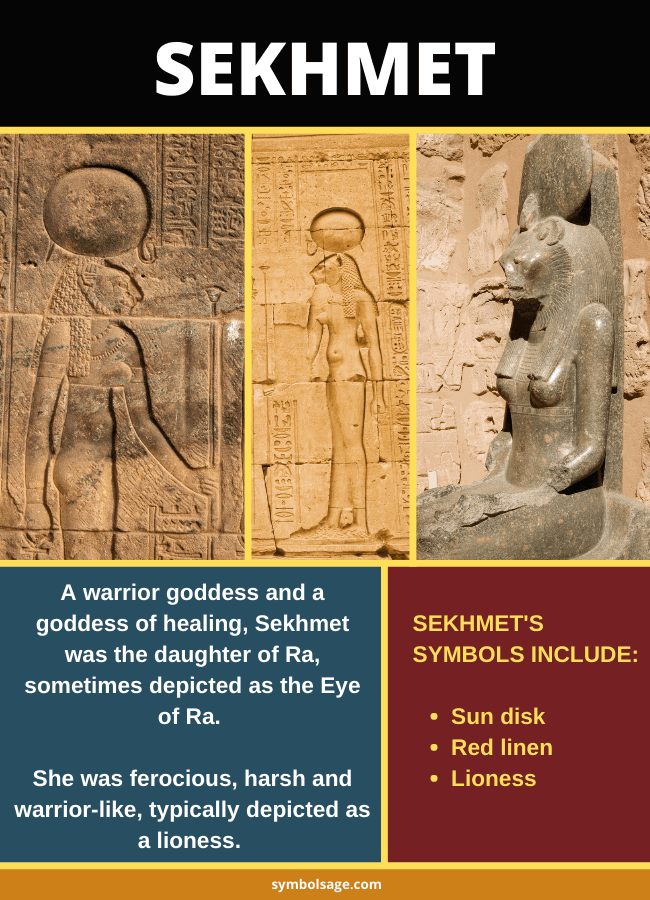
In Brief
Sekhmet was one of the earliest Egyptian deities, and had significant influence in the affairs of Ancient Egypt. She became a protectress for the pharaohs in life and the Underworld. In modern times, she has been placed among other great goddesses of ancient times, who represent women empowerment.







